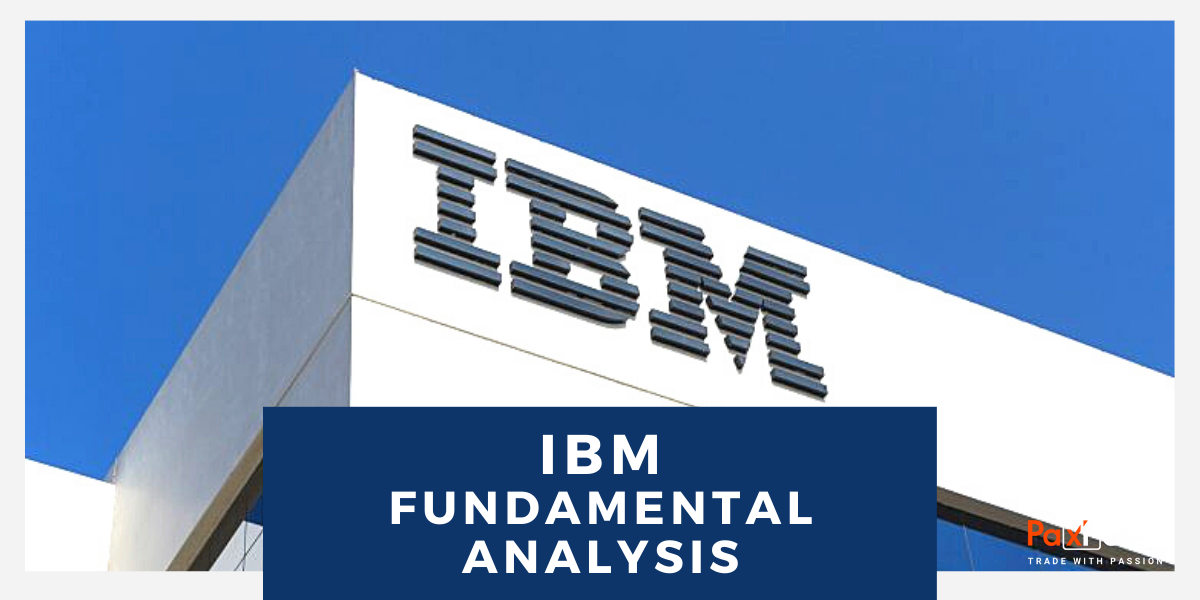
Source: PaxForex Premium Analytics Portal, Fundamental Insight
Tech stocks have been hit incredibly hard this year by rising inflation. For most of the first half of 2022, however, IBM stock has held better than most of its technology sector peers and even hit a 52-week high of $144.73 in June.
International Business Machines resisted the market downturn in the first half of the year thanks to earnings growth and a high dividend, which currently yields about 5 percent. But after the company announced Q2 earnings in July, things changed.
The stock fell from nearly $140 a share to less than $130 after the report was posted since IBM decreased its free cash flow forecast (FCF) for this year. Big Blue's ability to generate FCF is essential to the company's financial strength, including dividend payments.
But any concerns about the dividend fail to consider that IBM's 2022 is significantly distinct from its pre-pandemic version. The company now presents investors with much more than just an appealing dividend.
Let's first look at the decline in the FCF forecast. A lower FCF could negatively impact IBM's ability to raise the dividend (which it has done for 27 consecutive years) or, even worse, push the company to reduce the dividend, as many companies have done since the pandemic.
But FCF is the result of a host of macroeconomic factors that will weaken over time. For example, the strong U.S. dollar is hurting IBM, since about half of its Q2 revenues came from international markets.
And after Russia invaded Ukraine, IBM closed its Russian divisions. Although sales from that country accounted for less than 1 percent of 2021 revenue, the business had high margins, which squeezed IBM's profits and cash flow.
This combination of macroeconomic factors directed to an updated FCF forecast for the year of $10 billion instead of the previous range of $10.5 billion. Despite this, management is confident in achieving a total FCF of $35 billion between 2022 and 2024.
Thus, over the long term, IBM is balanced to meet its dividend obligations. The business can do so due to a recent transformation of its business toward revenue growth.
Under CEO Arvind Krishna, IBM has shifted its focus to hybrid cloud computing, which combines public and private cloud environments.
It's a popular IT infrastructure model in industries such as finance, where sensitive data requires a private cloud while cheaper public cloud components are used for other business needs. Such a transition has been successful for IBM, with hybrid cloud revenue growing 16% to $21.7 billion in 12 months.
IBM's cloud offerings are complemented by its infrastructure business, which sells the equipment needed for private cloud environments. In Q2, the company released its newest mainframe system, the IBM z16. This model is the first in which the company included a chip specifically designed for artificial intelligence (AI), and it has been a success. IBM z Systems' Q2 revenue was up 69 percent year over year.
The company's cloud computing and infrastructure capabilities are topped by IBM's consulting division, which helps customers choose and implement its technology. The consulting division's revenues grew 10% year over year in Q2. IBM expects consulting sales to continue to grow in double digits this year.
Three areas -- cloud computing, infrastructure, and consulting -- drove the strong performance for 2022. Revenue in Q2 grew 9% YoY to $15.5 billion, up 8% from Q1.
The company expects revenue growth to continue. Sales are projected to grow in the high single digits in constant currency in Q3. IBM should also meet its goal of growing revenue by $3 billion this year. The company's 2022 revenue has already surpassed $2 billion from last year.
In addition, IBM's business is helped by industry growth. The hybrid cloud computing market is poised to grow from $56 billion in 2020 to $145 billion by 2026.
The company's future looks bright as it continues to improve its technology. As part of its cloud offering, it now provides access to a quantum computer that can process complex data sets that even today's supercomputers can't handle. Banks and governments have begun to use this capability, such as HSBC.
In addition, IBM's long history in artificial intelligence technology makes it a leader in the field. For example, fast-food giant McDonald's is using IBM's artificial intelligence capabilities to test an automated drive-thru.
This success shows that the company's transformation is paying off. Big Blue is no longer just a dividend company. It is set for long-term revenue growth, making IBM a reasonable investment.
As long as the price is above the 129.00 level, follow the recommendations below:
- Time frame: D1
- Recommendation: long position
- Entry point: 131.01
- Take Profit 1: 134.00
- Take Profit 2: 138.00
Alternative scenario:
If the level of 129.00 is broken-down, follow the recommendations below:
- Time frame: D1
- Recommendation: short position
- Entry point: 129.00
- Take Profit 1: 126.00
- Take Profit 2: 123.00













